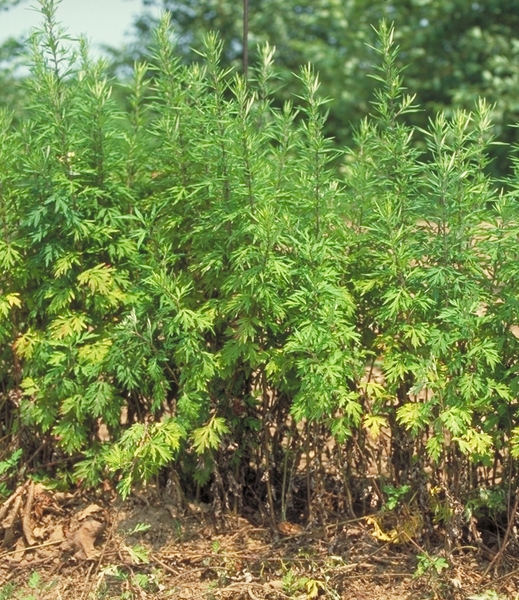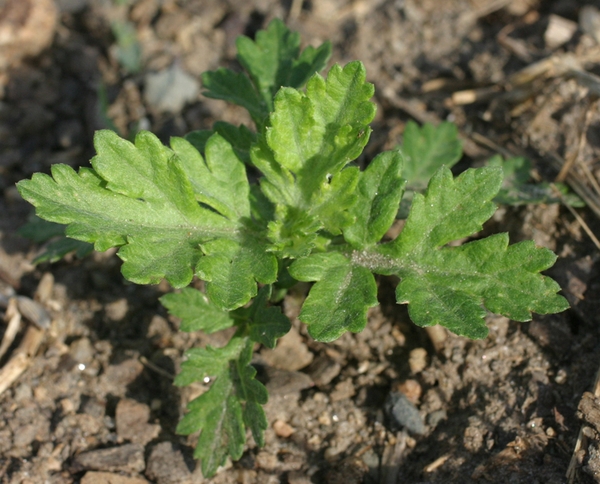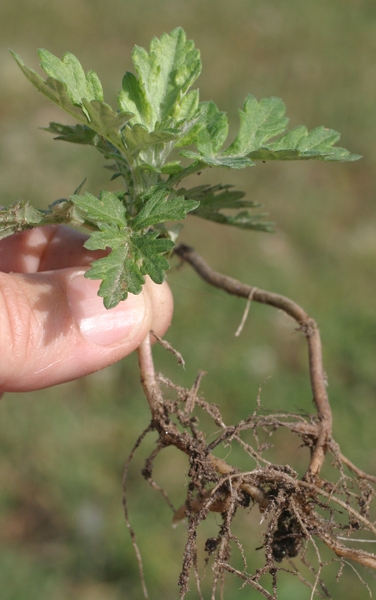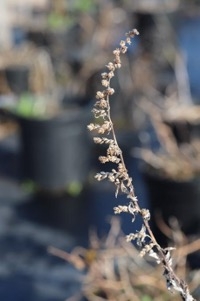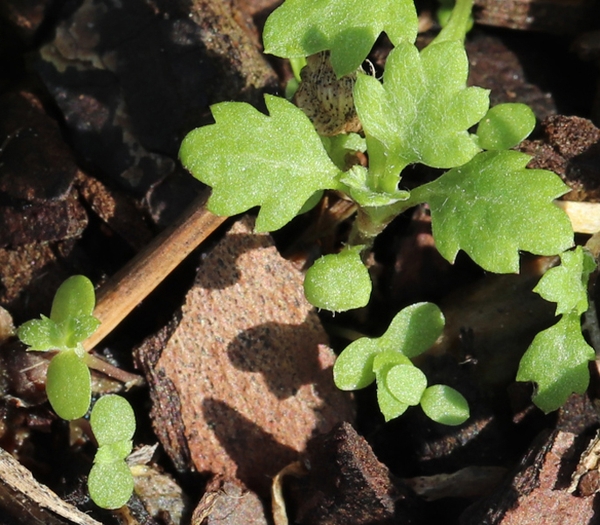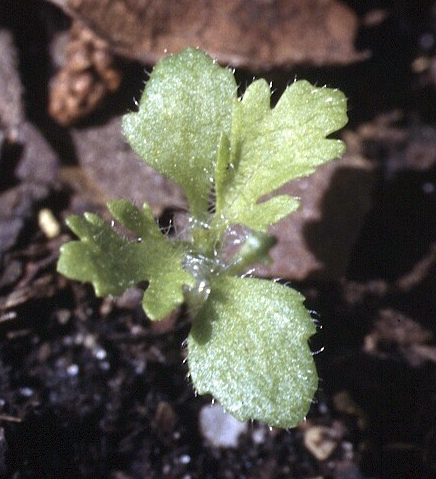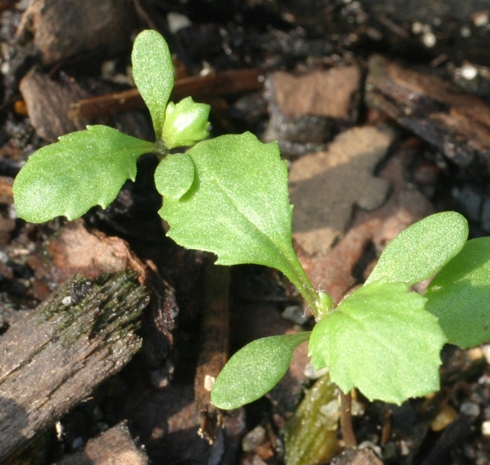Description
Mugwort (also known as chrysanthemum weed) is an aggressive, perennial weed which spreads by persistent rhizomes. The foliage resembles cultivated chrysanthemum but the undersides of leaves have white hairs (garden mums do not). Mugwort can grow upright to 6 ft but will also tolerate regular mowing. It is a common weed in landscape plantings and turf. Most infestations begin with contaminated root balls of landscape plants or movement of soil contaminated with mugwort rhizomes. Viable seed production is rare but when they are produced, plants are prolific seeders. Seeds drop close to the parent plant and can be spread by surface waters. Once introduced to a field or landscape mugwort is difficult to control, is spread by cultivation, and spreads rapidly to adjacent areas via rhizomes.
Reproduction and Spread
Mugwort spreads primarily by long, stout rhizomes and is often introduced into the landscape in root balls of field-grown nursery stock. Once introduced into landscapes, mugwort can spread to turf areas and adjacent properties. Plants emerge in early spring, flower in late summer/autumn, then die back to the ground after frost. Flowers are produced in clusters at the upper portion of the stems in late summer. Individual flowers are greenish-yellow disk flowers. Viable seed dispersal is uncommon but can be locally important, particularly in the Southeastern U.S. When conditions are conducive, plants produce copious amounts of seeds that fall close to the parent plant. Seeds can be dispersed by surface water movement.
Because seedlings have not been described in the literature, herein, I provide a detailed description based on observations of physical specimens. Seedling description: cotyledons are oval, 2-3 mm long, 1.5 to 2 mm wide, and sessile. First true leaves are opposite, elliptical, ~5mm long, widest in the middle of the blade with one shallow lobe on each margin and tapering to a short petiole. Subsequent leaves are alternative, with leaf margins lobed, and lobes becoming more conspicuous and deeper as plants grow. Both upper and lower surfaces are pubescent, but the lower surface is distinctively white-hairy.
Control
Persistent rhizomes make mugwort difficult to control in landscape plantings. Mugwort is tolerant of mowing and spread by cultivation. Mugwort can reproduce from small fragments of the rhizomes, thus, hand removal is quite difficult. It thrives in mulched landscape beds and is not controlled by common preemergence herbicides. Few postemergence herbicides are truly effective. Late summer or early fall applications of glyphosate or winter applications of dichlobenil are effective. Clopyralid did not control established stands of mugwort but was effective on seedlings or young shoots from small root segments. (For control guidelines in turfgrasses, consult your state’s Extension guidelines for weed management in turf.)
Similar Species
The established perennial plants are distinctive and rarely mistaken for other species. Foliage looks like garden chrysanthemum but is distinguished by white hairs on the back of the leaves and rhizomes, both of which are lacking in chrysanthemums. Juvenile mugwort can be confused with ragweed, but ragweed leaves are more finely lobed and lack the white hairs on the underside. The very young seedlings might be mistaken for seedlings of common groundsel (Senecio vulgaris), dogfennel (Eupatorium capillifolium) or groundsel shrub (Baccharis halmifolia). Groundsel and dogfennel seedlings lack the white hairs on the underside of the leaves. Groundsel shrub also lacks hairs on the underside of the leaves also, but often has white waxy coatings on the leaves. At maturity, these species are quite distinctive from mugwort.
References
Neal, J. C. and C. R. Adkins. 2001. Comparison of glyphosate and clopyralid for mugwort (Artemisia vulgaris) control in field-grown nursery crops. Proc. Southern Nursery Assoc. Res. Conf. 46:420-421.
Neal, J.C., R. Uva, J. DiTomaso and A. Ditommaso. 2023. Weeds of the Northeast (and Mid-Atlantic States). Cornell Press. 158.
Publication date: March 2, 2023
Recommendations for the use of agricultural chemicals are included in this publication as a convenience to the reader. The use of brand names and any mention or listing of commercial products or services in this publication does not imply endorsement by NC State University or N.C. A&T State University nor discrimination against similar products or services not mentioned. Individuals who use agricultural chemicals are responsible for ensuring that the intended use complies with current regulations and conforms to the product label. Be sure to obtain current information about usage regulations and examine a current product label before applying any chemical. For assistance, contact your local N.C. Cooperative Extension county center.
N.C. Cooperative Extension prohibits discrimination and harassment regardless of age, color, disability, family and marital status, gender identity, national origin, political beliefs, race, religion, sex (including pregnancy), sexual orientation and veteran status.

